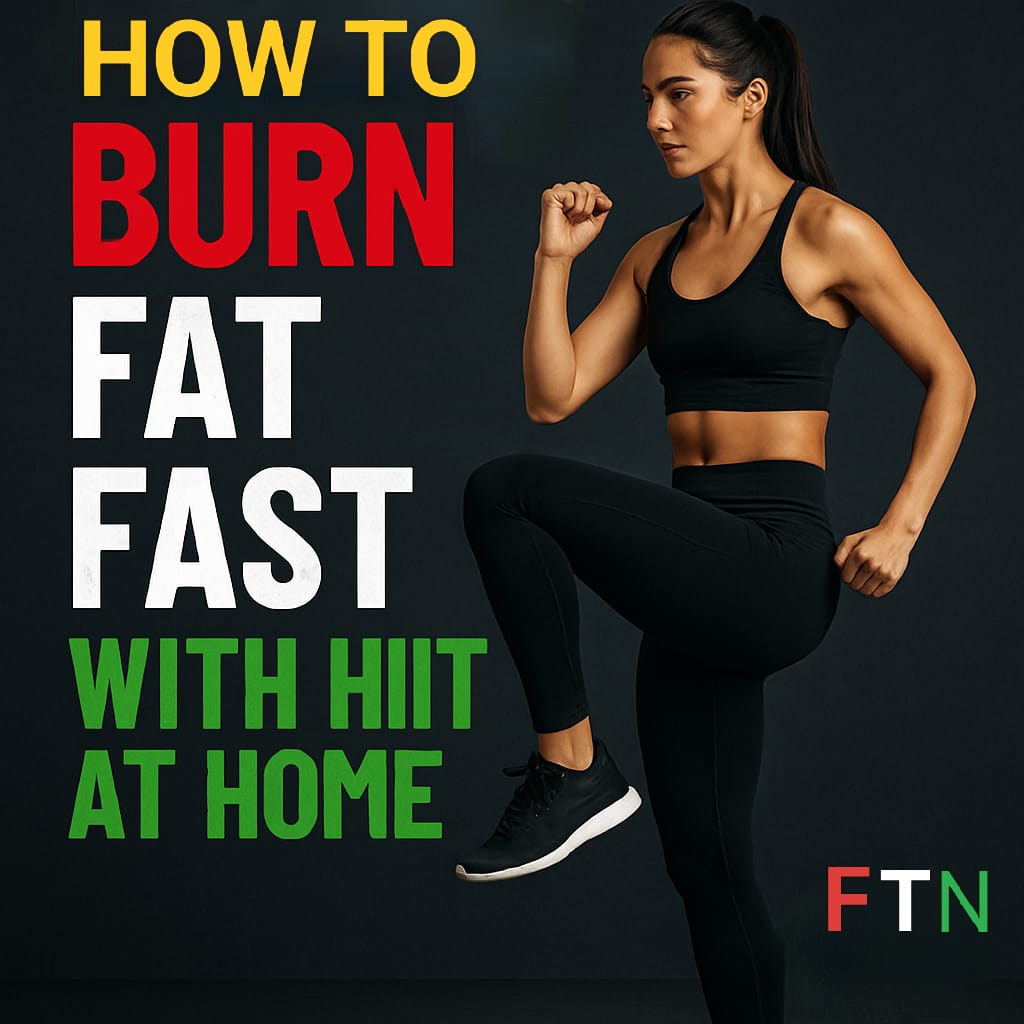Understanding HIIT: What It Is and How It Works 🚀
High-Intensity Interval Training (HIIT) is a powerful, time-efficient workout method that has become wildly popular among fitness enthusiasts — and for good reason. 🔥 HIIT involves alternating between short bursts of intense effort and periods of rest or low-intensity activity. Whether you’re sprinting, doing jumping jacks, or performing bodyweight squats, the goal is to push yourself during the high-intensity phases, then allow your body to recover briefly before going hard again.
The magic of HIIT lies in its ability to skyrocket your heart rate and metabolism in a short amount of time. During the intense intervals, your body taps into anaerobic energy systems, which helps burn fat faster. Even after the workout is over, your body continues to torch calories thanks to the afterburn effect, scientifically known as EPOC (Excess Post-exercise Oxygen Consumption). That means you keep burning fat while resting! ✨
What makes HIIT even better? It’s adaptable to all fitness levels and can be done anywhere — no fancy gym needed. Whether you’re using your own bodyweight or a few dumbbells, HIIT can deliver amazing results in just 20-30 minutes a day. 🏋️♂️
Essential HIIT Workouts You Can Do at Home 🏡
Ready to sweat? Here are some must-try HIIT workouts that you can crush from your living room:
1. Bodyweight HIIT (Beginner-Friendly) 💪
30 sec: Jumping Jacks
30 sec: Rest
30 sec: Bodyweight Squats
30 sec: Rest
30 sec: Push-Ups (or knee push-ups)
30 sec: Rest
30 sec: Burpees
30 sec: Rest
🏋️ Repeat 3-4 rounds.
2. Dumbbell or Kettlebell HIIT (Intermediate-Advanced)
30 sec: Dumbbell Thrusters
30 sec: Rest
30 sec: Kettlebell Swings
30 sec: Rest
30 sec: Renegade Rows
30 sec: Rest
30 sec: Mountain Climbers
30 sec: Rest
📈 Complete 3-5 rounds depending on your level.
3. Plyometric HIIT (Advanced)
20 sec: Tuck Jumps
40 sec: Rest
20 sec: Plyo Push-Ups
40 sec: Rest
20 sec: High Knees
40 sec: Rest
🏋️ Start with 2-3 rounds and build up.
Customize the timing, rest, and number of rounds to match your fitness level. The goal is intensity, not perfection! ✅
Fueling Your HIIT Success: Diet & Nutrition Tips 🍏🧅
To get the most out of your HIIT workouts, you need to fuel your body with the right nutrients. Think of food as your workout partner — without it, you won’t perform at your best.
Carbs = Energy: Whole grains, fruits, and veggies provide fuel for high-intensity sessions.
Protein = Recovery: Lean meats, eggs, tofu, or legumes help rebuild muscle.
Healthy Fats = Balance: Avocados, nuts, and olive oil support hormone function and overall health.
💧 Hydration: Drink water before, during, and after workouts to stay energized and reduce fatigue.
🍽️ Pre-Workout Snack (30-60 min before): Banana with peanut butter or Greek yogurt with berries.
🍔 Post-Workout Meal (within 30 min): Protein shake with a piece of fruit or grilled chicken with sweet potato.
Your body will thank you with better performance, faster recovery, and stronger results! ✨
Track Your Progress & Stay Motivated ✏️📊
Sticking to a new routine can be tough, but tracking your progress makes it easier and way more rewarding.
✅ Set SMART goals: Specific, Measurable, Achievable, Relevant, Time-bound.
📅 Log your workouts: Use an app or journal to track what you did and how you felt.
👥 Find an accountability buddy: A friend, family member, or online community can help keep you on track.
🔄 Avoid burnout by mixing things up! Alternate workouts, add music, or try challenges to keep it fresh.
Celebrate every win — no matter how small. Whether you nailed a new move, shaved time off your circuit, or just showed up when you didn’t feel like it, it all counts. 🎉
With consistency, proper fuel, and a bit of planning, HIIT can transform your fitness journey — right from your living room. Let’s get after it! 🚀💪
HIIT isn’t just a fitness trend — it’s a scientifically backed, time-efficient method to burn fat and boost metabolic rate, especially relevant for busy Americans balancing health and lifestyle.
✅ What makes this topic powerful:
This video showcases how HIIT taps into EPOC (Excess Post-Exercise Oxygen Consumption), which means your body keeps burning calories hours after the workout is done. That’s a game-changer for people who don’t have hours to spend training.
🏠 Why this matters at home:
You don’t need a gym, machines, or fancy setups — just your bodyweight and commitment. HIIT routines make home workouts intense and effective, with short bursts of effort followed by rest.
💡 Coach’s Perspective:
The biggest mistake people make when trying to lose fat is relying only on long, moderate-intensity cardio. HIIT flips that on its head — it’s not about duration, it’s about intensity and consistency. This video helps viewers understand that in a clear, practical way.
🔥 Pro Tip:
To maximize fat loss at home, combine 3 HIIT sessions per week with a slight calorie deficit and protein-rich meals. Recovery matters — avoid overtraining by allowing at least one rest day between HIIT days.

